Posts Tagged ‘horror’
“Twin Peaks” thoughts, Season Three, Episode Ten
July 17, 2017If all this reboot did was alternate ridiculous scenes with horrifying ones, it would still be relatively easy to get a handle on: You’d just hold your breath each time the show cut to a new location until you figured out what you were in for, and that would be that. But this series isn’t just a coin that its co-creators repeatedly flip – it’s something more multidimensional and a lot messier. Consider the scene in which Rodney Mitchum, the intimidating co-owner of the Silver Mustang Casino, gets accidentally whacked in the forehead with a remote control by his daft showgirl girlfriend Candy, who’s so intent on killing a pesky housefly that its human landing site failed to register. The emotional cacophony that follows – Candy screaming and sobbing in horror, Rodney howling in pain, his brother Bradley (Jim Belushi!) rushing in to see what’s wrong – makes you laugh. And then you cringe. And then you get genuinely worried for all involved.
This goes double for the trio’s subsequent scenes. The brothers watch a news report on Ike the Spike‘s arrest after his attempted murder of Dougie while poor Candy wonders aloud if her beau can ever love her again. Later, Mr. Jones’ sleazy coworker Anthony Sinclair (Tom Sizemore) shows up at the Silver Mustang on the orders of the Mitchums’ rival – and the evil Cooper doppelganger’s minion – Duncan Todd to pin the blame for a costly insurance loss on Dougie. He hopes that the bros will finish the job the Spike started. But Sinclair is waylaid by the increasingly unhinged-seeming showgirl, who spends an inordinate amount of time explaining the benefits of air conditioning instead of simply showing him into their office.
Both scenes dance back and forth across the boundaries between funny, creepy and skin-crawlingly uncomfortable – a shuffling boogie not unlike the one our beloved Man from Another Place used to dance across the Red Room. So, for that matter, does the whole damn show. Thanks to canny policework by Albert and Tammy, as well as supernatural interventions by the Log Lady and the spirit of Laura Palmer, lawmen like Gordon Cole and Deputy Hawk are closer than ever to cracking the mystery of Coop’s disappearance and duplication. But the creative riddle of Twin Peaks still maddeningly, gloriously unsolvable.
“Twin Peaks” thoughts, Season Three, Episode Nine
July 13, 2017Last time we visited, Twin Peaks unleashed the fires of the atom and the demons of the Black Lodge. For the follow-up, the show wants to talk about … love. Why not? If director David Lynch and co-writer/co-creator Mark Frost have proven anything in this inventive, powerful relaunch of their supernatural soap opera, it’s that they can do pretty much anything they damn well please. A show that spends minutes on end inside a nuclear explosion one week can depict lovable goofballs Deputy Andy and Lucy Brennan ordering living-room furniture the next.
The 100 Greatest Movies of the Nineties
July 13, 201749. Heavenly Creatures (1994)
Before Peter Jackson took us all to Middle-earth, he brought moviegoers to the mad world of two troubled teenagers – a fictional universe every bit as engrossing as J.R.R. Tolkien’s, but far more romantic and lethal. Based on a true-crime story, the film depicts pre-stardom Kate Winslet and Melanie Lynskey as Pauline Parker and Juliet Hume, two New Zealand teenagers whose BFF-ship blossoms first into love, then madness and ultimately murder. Jackson’s kinetic camera captures the rapturous swirl of teenage dreams before plunging us into its brutal, bloody endpoint. It’s a beautiful dark twisted fantasy. STC
I wrote about Natural Born Killers, Heavenly Creatures, and The Blair Witch Project for Rolling Stone’s list of The 100 Greatest Movies of the ’90s. My editor David Fear assembled an absolute murderers’ row of writers for this thing — it’s a real treat.
The A.V. Club’s favorite comics of 2017 so far
June 30, 2017Mirror Mirror II (2dcloud), anthology
As with any anthology, Mirror Mirror II features some entries that will leave more of an impression than others, but the totality of the work presented is both haunting and astounding. Collecting comics, prose, and illustrative work from such luminaries as Clive Barker and Al Columbia, as well as work by younger authors like Céline Loup and Trungles, editors Sean T. Collins and Julia Gfrörer have curated quite the book. The theme unifying all of these pieces is the convergence of the erotic and the macabre—some works being more explicit than others—but that may be the only commonality between them. Each one offers a striking aesthetic vision. And though some will resonate more deeply than others—which works stand out will most certainly depend on the reader—they accumulate to form an impressive volume. An enormity of spectacle is brought to bear on exploring the commingling of the pleasurable with the painful, the fantastic with the nightmarish, and the result is a series of truly shocking and often deeply moving images. Mirror Mirror II is troubling and challenging, but it is also rewarding and stunning—a thrilling experience that readers won’t soon forget. [Shea Hennum]
I’m proud to say that the AV Club selected Mirror Mirror II as one of its favorite comics of the year so far. The reviews for this book have been just wonderful.
“Twin Peaks” thoughts, Season Three, Episode Eight
June 26, 2017What is clear is the birth of Bob’s bracing message. This disturbing, disorienting episode explicitly ties the demon’s creation to the atom bomb’s detonation, an act of man that rivals, or betters, the dark deeds of any religion’s devil. The connection is no accident. Nor is it without precedent: Ever since the original Twin Peaks introduced supernatural horror into its director’s body of work, the link between otherworldly evil and real-world brutality has been a constant. Lynch treats human cruelty like a rupture in the fabric of reality through which demons of every shape and size can enter — think Lost Highway‘s white-faced Mystery Man, Mulholland Drive‘s monstrous dumpster-dweller and gibbering old folks, Inland Empire‘s balloon-faced Phantom and, of course, the dwellers of the Black Lodge. They all feed on and perpetuate the cycle of violence that enabled their emergence.
Some experiences and emotions are so cataclysmic that our everyday imagery and vocabulary cannot possibly do them justice; monsters give shape to those feelings, the same way an aria in an opera or a song in a musical gives human passion a voice. In crafting creatures like that denim-clad monster and his dark brethren, Lynch is doing what all great horror does. He’s taking the agony and fear we already feel and, like Dr. Frankenstein in his lightning-streaked laboratory, bringing it to unholy life. The real question this episode asks, then, is no more or less than the one pilot Robert A. Lewis asked when he dropped the atomic bomb on Hiroshima: “My God, what have we done?”
MIRROR MIRROR II @ Amazon
June 24, 2017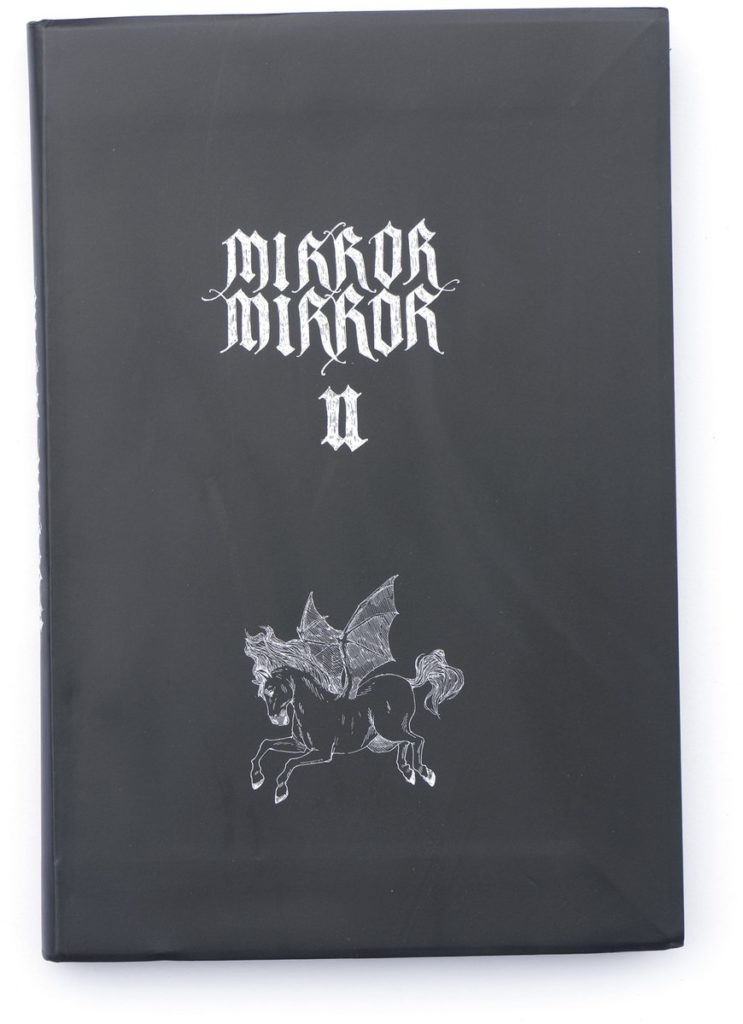

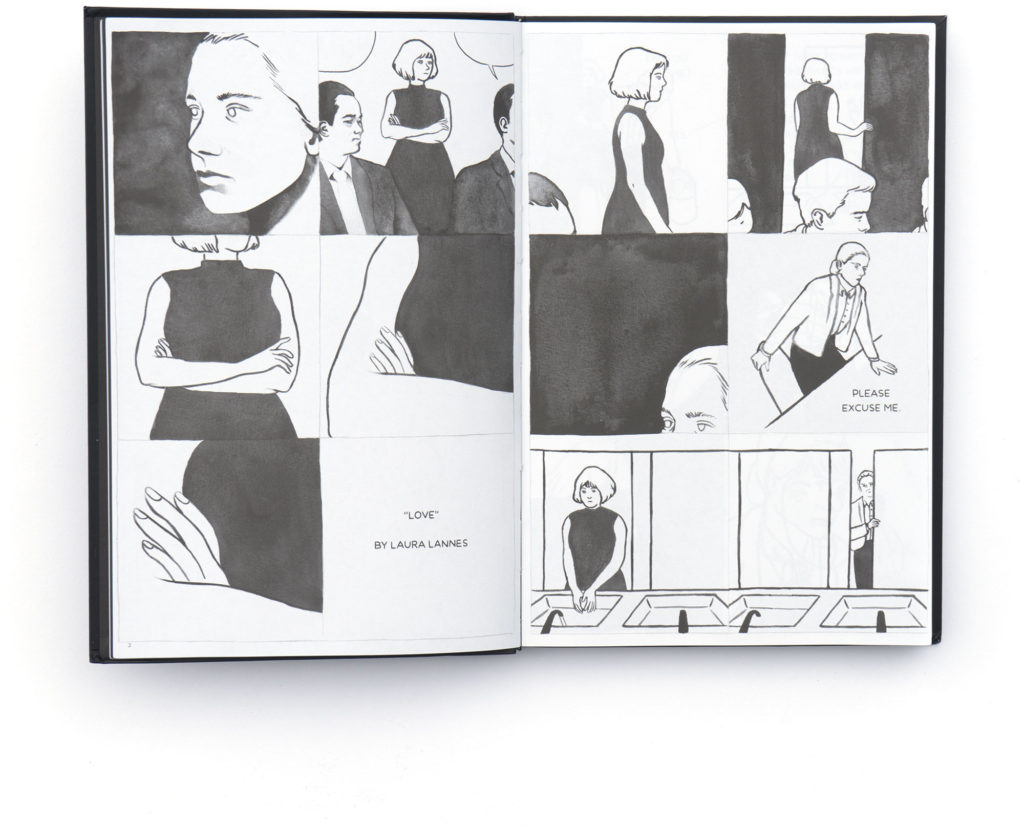
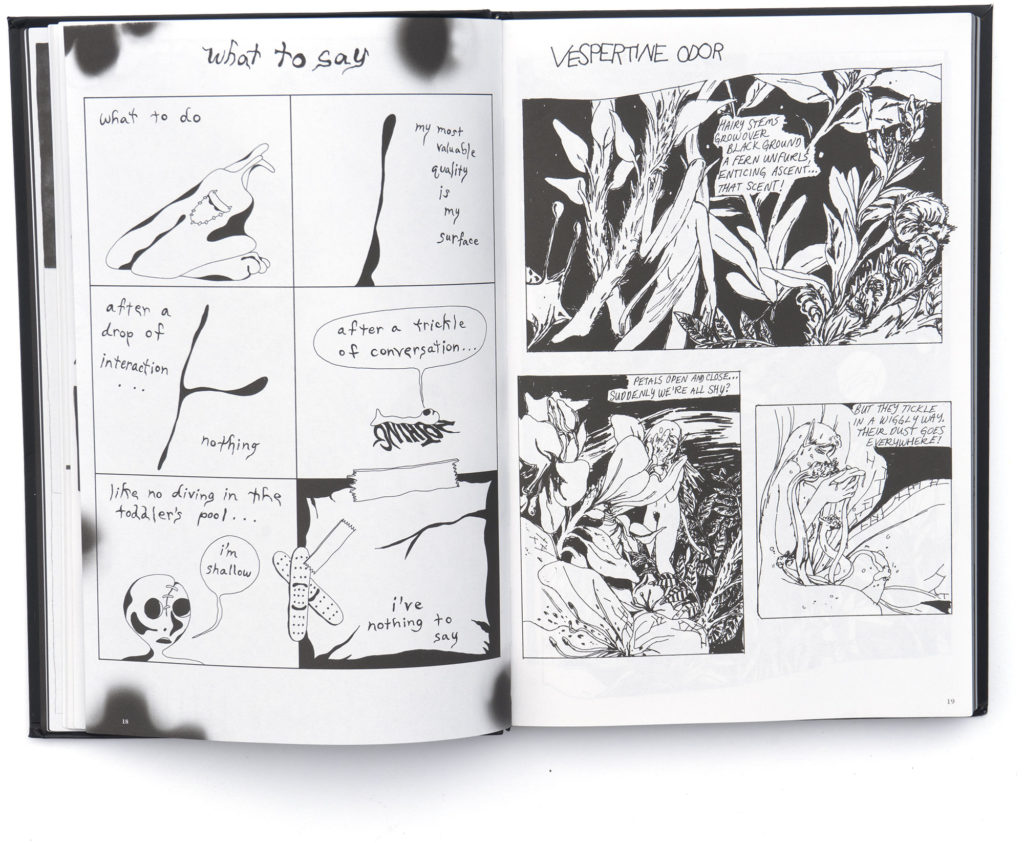
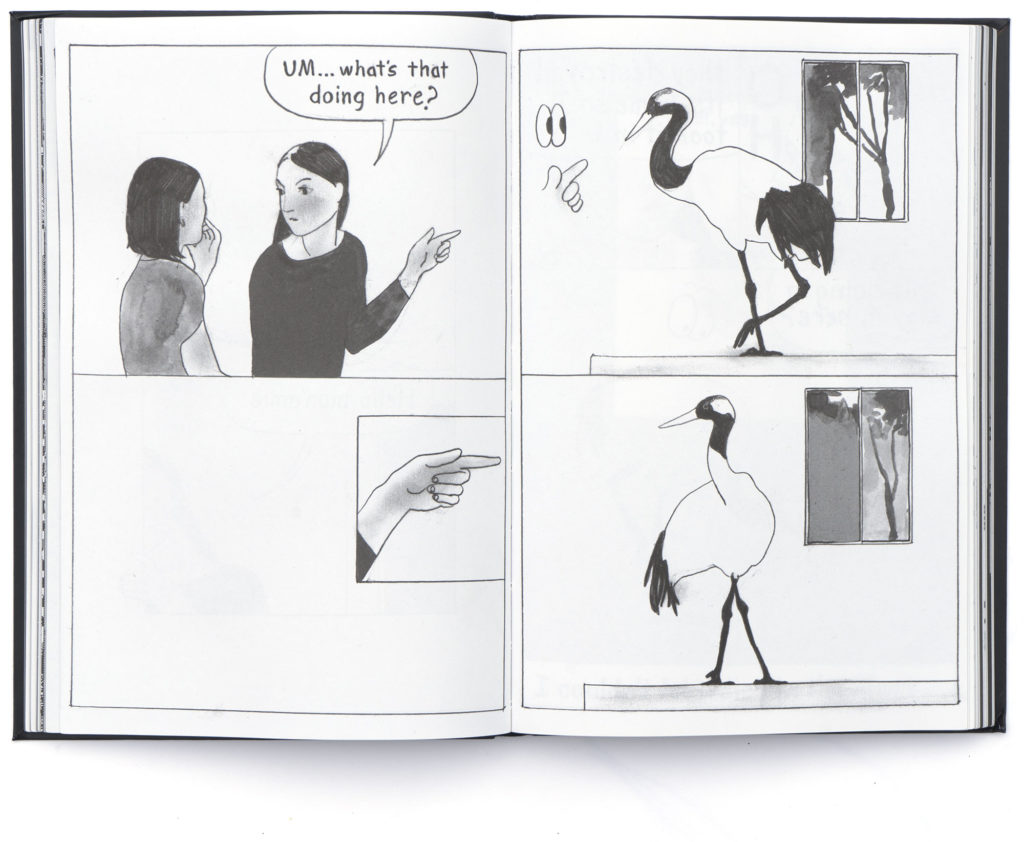
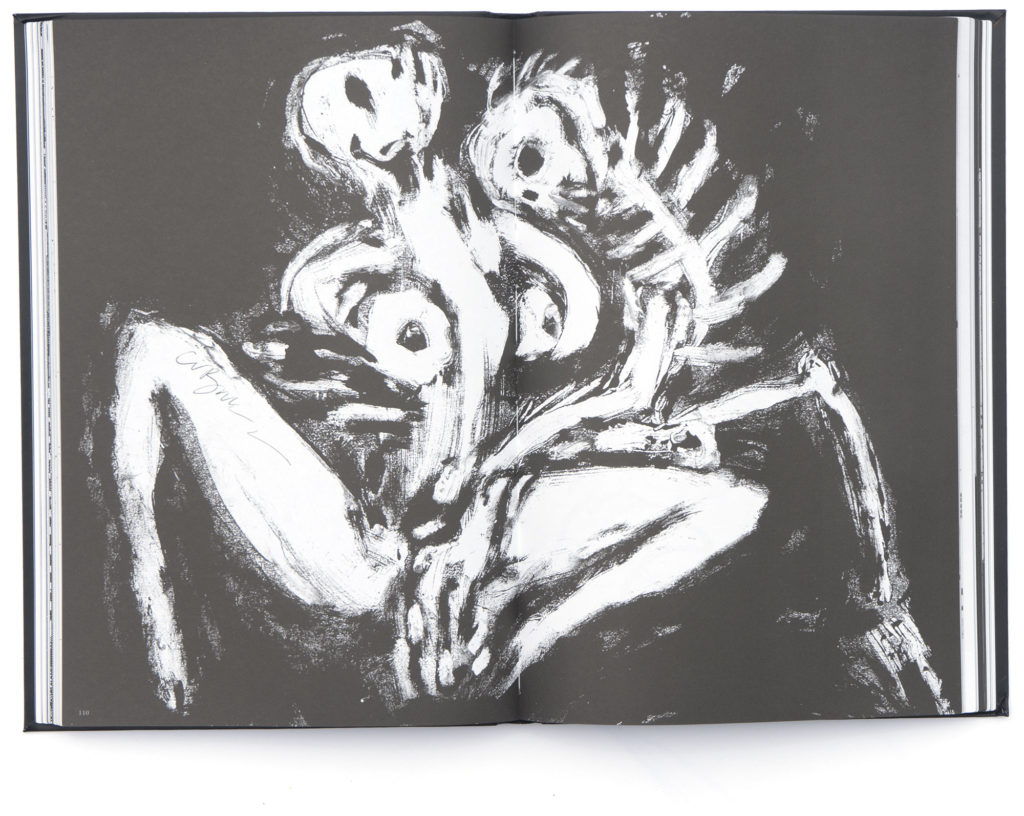
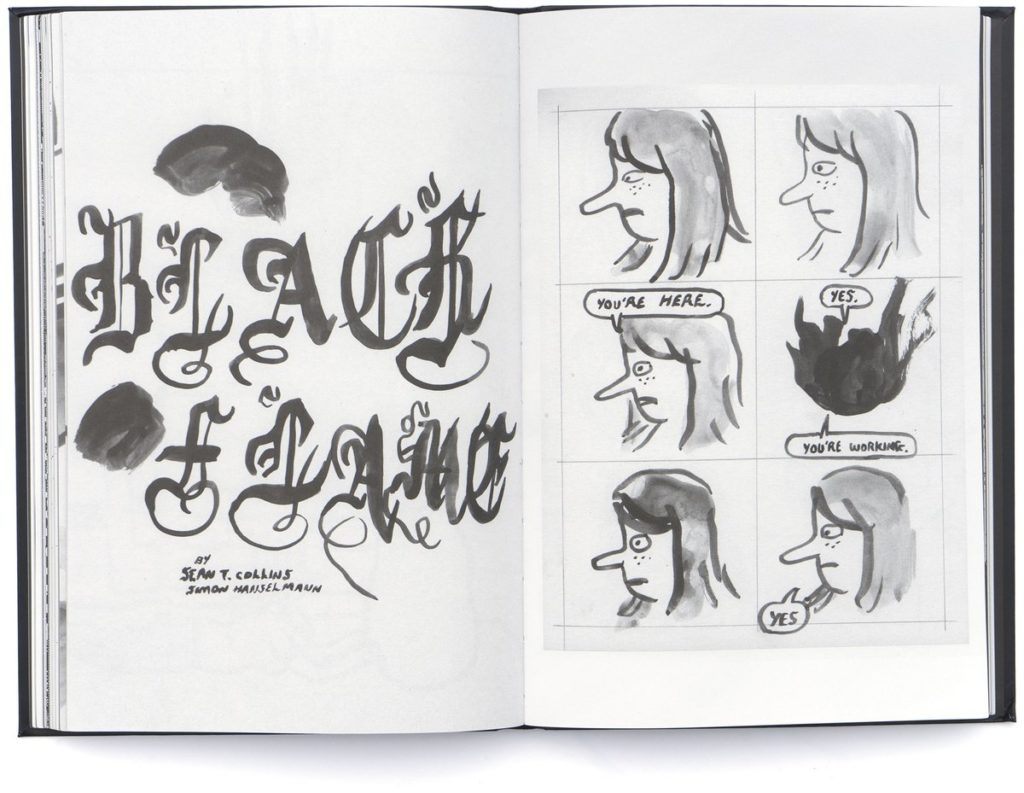
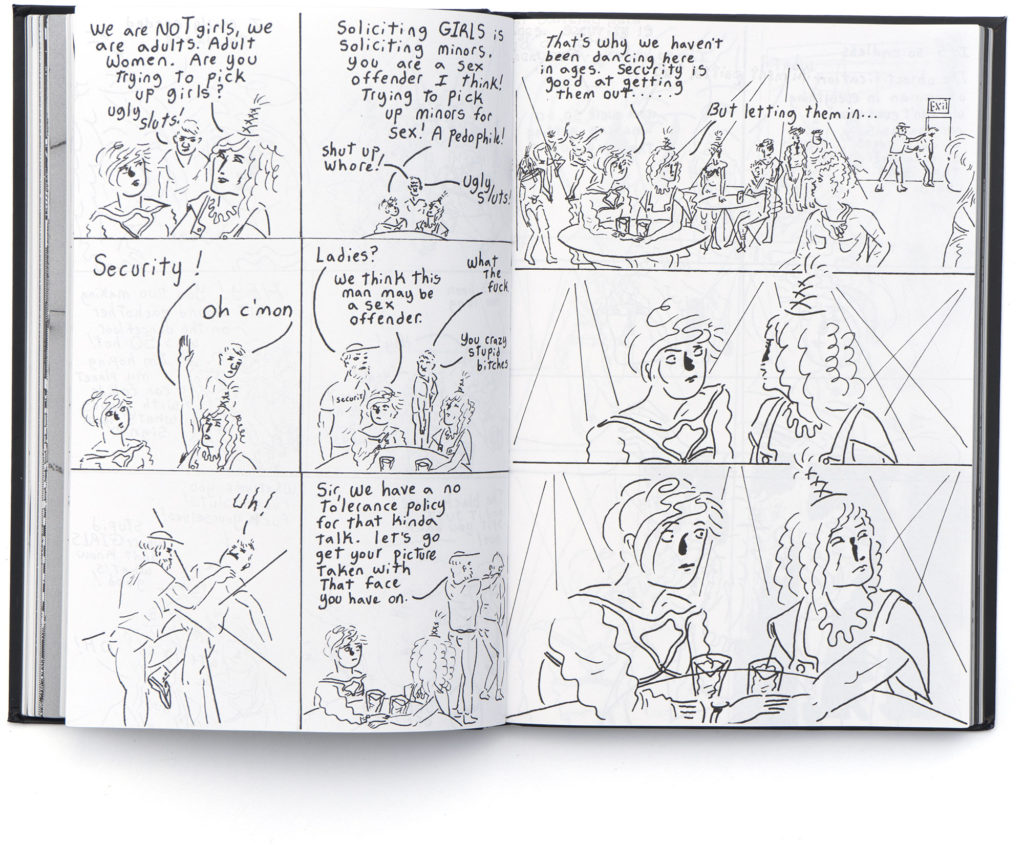
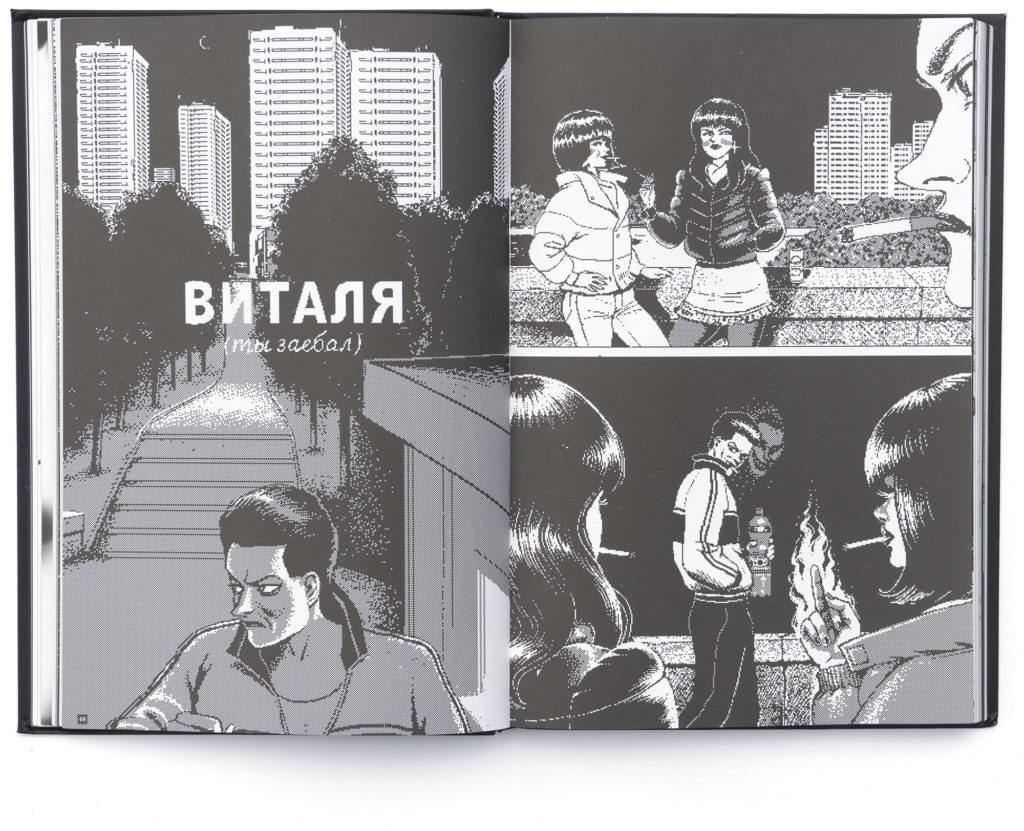
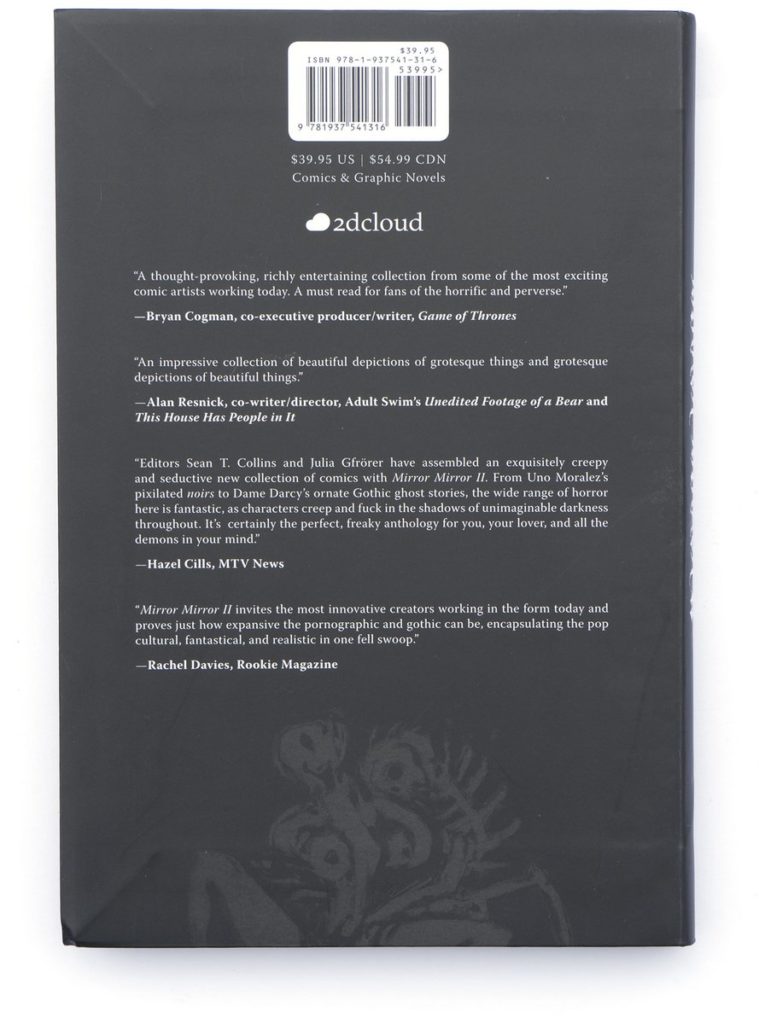
Mirror Mirror II is now available for purchase at Amazon. It’s already shipped, and people have already received their copies. You can order it from Amazon, or pre-order it from our publisher 2dcloud — copies will ship soon.
I’m so glad this book is in the world for you.
“Twin Peaks” thoughts, Season Three, Episode Seven
June 19, 2017The third pseudo-ominous scene, and we’re gonna guess it’s the one that gets people talking, takes place in the Bang Bang Bar, a.k.a. the Road House, a.k.a. the place where we just sit around and watch a guy sweep up debris from the floor for nearly the entire duration of “Green Onions” by Booker T. and the MGs. Why? The answer that springs to mind is “why the hell not,” and hey, that’s perfectly valid. But the phone conversation that ends the scene, in which Jean-Michel Renault (no, not the long-dead sleazebag Jacques, but one of his equally gross relatives) rants and raves about the 15-year-old girls he pimped out to an unhappy client, provides a different answer. What you’ve got here is the banality of evil: A dude who can sit around twiddling his thumbs to an old R&B classic, then pick up the phone and crack jokes about statutory rape. As Jacques would say in a thick French-Canadian accent, “Bite ze bullet, baby.”
I reviewed last night’s tense and clever Twin Peaks for Rolling Stone.
8 Comics You Need to Read This June
June 14, 2017Mirror Mirror II by various (2dcloud)
There was a time when you could rely on comic books for bone-deep terror — the early-1950s was the heyday of horror tales produced by publishers like EC Comics. Alas, that heyday was cut short by a moral panic and a subsequent regime of censorship, and horror comics never quite recovered as a phenomenon. Thank goodness, then, for Mirror Mirror II, a new collection of short horror pieces edited by Sean T. Collins (who is a contributor to Vulture) and Julia Gfrörer. It awakens the long-underused genre and pushes your fear buttons in ways you could never have anticipated. It’s hard to pick the most memorably mind-devouring portion: Is it cartoonist Mou’s tale of a guy who one day finds himself painfully ejaculating letters that spell out a set of cryptic sentences? Or filmmaker Clive Barker’s painted vignettes of savaged and distorted human figures? Or Al Columbia’s unnerving single-panel depictions of old-timey cartoon characters engaging in unspeakable acts? Open wide and decide for yourself.
Abraham Riesman included our book MIRROR MIRROR II in his list of the month’s must-read comics for Vulture. I’m pretty sure you’ll be able to get it one way or the other — retail or online — either at the very end of the month or the very beginning of July. I can’t wait till you all can see it.
Tiny Pages Made of Ashes 5/19/17: MIRROR MIRROR II
June 14, 2017When I was younger, I practiced vipassana meditation. Unlike my current zen habit of ‘just-sitting’, vipassana asked me to contemplate the true nature of reality by focusing on certain images that would help bring me closer to truth. One of the pertinent images that drove the Buddha towards the path of enlightenment was that of a corpse. But when you haven’t really seen a corpse that wasn’t pumped full of embalming fluid and dressed up for you, there is some serious detachment from what it really means to see inside of Death. Still, I think those hours spent drumming up morbid-but-hollow imagery were the closest I had ever gotten to actually thinking about The Abject. And I would argue it is only about as close as a S.I. swimsuit cover could take you to thinking about the truly erotic.
Bubblegum enlightenment.
In her foreword to Mirror Mirror II, Felker-Martin asks readers like me to consider horror on a continuum with the erotic; this realm—the realm of The Abject—weaves through our humanity; from our sexuality, to the desires we bury, and back through to the very fragility of our flesh and what that means for us as everyday creatures. More than bubblegum enlightenment, this sets up a spectrum of artwork that acts as what anthology editor and contributor Julia Gfrörer calls on a recent Process Party podcast, a “sublime ritual of degradation.”
And while my girlfriend probably isn’t thrilled about the idea of watching Hellraiser, Mirror Mirror II brought at least one more person to the altar of fiction which rends flesh. Prior to this anthology, my interest in horror media generally was almost exactly ZERO. Felker-Martin’s prognosis for the reader gave me pause: “What you’re about to read will hurt you.” Why in the fuck would I want that?
[…]
In writing this review, I first attempted to sum things up as best I could about the kind of work Mirror Mirror II is; but so many of the individual works themselves reached out and grabbed me in particular ways that I felt compelled to say something about each one.And this just kept happening.
There’s still more work to talk about, from Carol Swain (shit, one of my favorite comics in the book was hers!), Al Columbia(!), Noel Freibert, Dame Darcy(!!), Mou, Uno Moralez, a murderer’s row of Clive Barker illustrations(!!!!!), a piece authored by co-editor Collins, and more. But any omissions certainly won’t haunt me as much as the work itself.
While words like “degradation” and “abject” don’t follow a straight line to “empathy” either in a thesaurus or in the minds of many people, there is obviously a broadening of perspective that comes when you are rendered vulnerable. And you cannot will yourself into vulnerability. Alone, you can only conjure decay once you are already no longer living and breathing. While you can still feel and fuck and fear, you must be led by a dark muse to a fetid clearing where a more communal sense of perversion and violation crawls between your toes. You must peer at what lies just beyond.
You must hurt.
This is the beginning and end of an absolutely extraordinary review of our book MIRROR MIRROR II by Comics Bulletin’s Austin Lanari. In between he goes in-depth on contributions by Laura Lannes, Sean Christensen, Aidan Koch, Josh Simmons, Trungles, Julia Gfrörer, and Meaghan Garvey, and basically exceeds my wildest expectations about readers getting it. I’m so grateful.
“bear witness, that is all”
June 14, 2017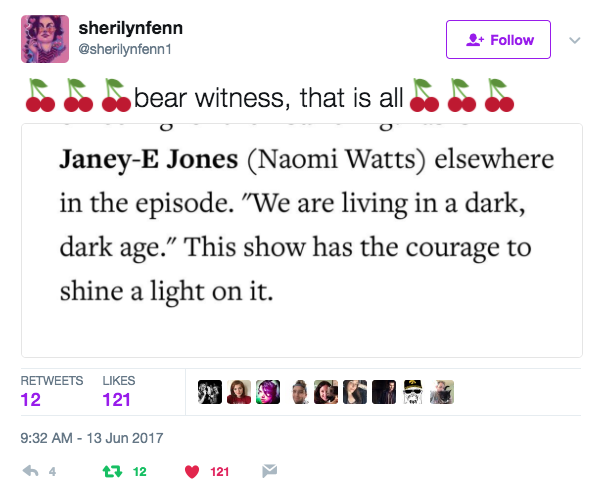
Sherilyn Fenn, aka Audrey Horne, quoted my review of the latest Twin Peaks and added a bunch of cherry emojis. So I’m dead now,
“Twin Peaks” Thoughts, Season Three, Episode Six
June 14, 2017Harry Dean Stanton is 90 years old, though he’s looked so world weary for so long that he seems somehow ageless and immortal. In light of the key Twin Peaks players who’ve died before the series’ return to the air – Jack Nance, Frank Silva, Frances Bay, Don S. Davis, Warren Frost, David Bowie, and most hauntingly Miguel Ferrer and Catherine Coulson, who reprised their roles as Albert Rosenfield and the Log Lady before they passed away – we’re fortunate to have him. When his character, Carl Rodd, tells his younger companion “I’ve been smokin’ for 75 years, every fuckin’ day,” he literally laughs in the face of his own mortality. But way back when we first met him in Fire Walk With Me, set nearly 30 years ago, he intimated to a pair of FBI agents investigating a Black Lodge–related murder that he’d seen too much. “I’ve already gone places,” he said. “I just want to stay where I am.”
Making Stanton’s Carl the Virgil on our journey to this episode’s particular Hell – the hit-and-run killing of a little boy by local monster Richard Horne (Eamon Farren) – lends even more weight to the moment. It provides a contrast between the old man’s long life – achieved against the medical odds, by his own admission – and the life of the little boy, cut so horrifically short. It offers an unparalleled range of emotion, beginning with him simply sitting on a bench and enjoying the wind and light through the trees and ending with him seeing one of the worst things a person can see. And whether he’s watching the boy’s soul ascend or simply providing his mother with human connection and validation by touching her and looking into her eyes, his role is just that: to see, to bear witness. It’s not that witnesses are in short supply – plenty of bystanders observe the accident and its aftermath. But when Carl takes the next step and comforts the grieving mother, he’s the only one to bear witness – bear as in a cross.
[…]
Two crucial links to the murdered child who set the entire chain of events in motion are uncovered in an episode that forces us to confront the killing of children face-on. Laura’s face appears in the opening credits every week, but this is a way to make her presence, and her absence, hit home. Doing any less would be a cop out, a dodge, a refusal to bear witness. “What kind of world are we living in where people can behave like this—treat other people this way, without any compassion or feeling for their suffering?” asks Janey-E Jones (Naomi Watts) elsewhere in the episode. “We are living in a dark, dark age.” This show has the courage to shine a light on it.
I reviewed this week’s extremely difficult Twin Peaks for Rolling Stone. I have to say, the response I’ve gotten to my writing on the season so far, and this episode in particular, is extremely gratifying. What it’s doing means a lot to me.
“Fargo” thoughts, Season Three, Episode Eight: “Who Rules the Land of Denial?”
June 9, 2017This is the one you’ve been waiting for. Whether you’ve been one of Fargo Season Three’s inexplicably large number of skeptics or singing its praises from the jump, this is the episode that either puts paid to your criticism or pays off your faith. It’s called “Who Rules the Land of Denial?”, and it features the season’s best action/thriller sequences, its goriest crimes, its biggest surprises, its most striking cinematography, and its most direct trafficking in the uncanny.
I adored this week’s episode of Fargo, which I reviewed for Decider.
“Twin Peaks” thoughts, Season Three, Episode Five
June 5, 2017The shot that hits hardest is neither comedy nor horror, but pure pleasure. It’s a close-up on the face of Becky (Amanda Seyfried!), Shelly‘s troubled daughter, staring up at the sunlit sky as she rides around in her boyfriend’s car. In this moment of literal wide-eyed wonder, the show captures the joy of being alive. But more than that, it acknowledges that this joy really couldn’t give a shit if it comes from the bump of coke you did in your good-for-nothing boyfriend’s beater. You take your happiness where you can get it, and Becky gets it riding through town with the top down and her seatbelt off, while the Paris Sisters croon “I Love How You Love Me” on the radio.
Looking back at the show’s original two seasons and the prequel film Fire Walk With Me, it’s striking how many islands of bliss and contentment its screwed-up characters carve out for themselves amid all the murder and magic and mayhem. Think about how happy Shelly and Bobby were together, despite the ever-present menace presence of her Leo. Think about Coop, delighting in everything from the camaraderie of his friends in the Bureau and the Sheriff’s Department to the simple pleasures of coffee and pie. Think about Laura Palmer herself, dancing around with her best friend Donna at a picnic just weeks before her death, her life of addiction and abuse momentarily forgotten.
And this big-hearted optimism is not just limited to Twin Peaks within Lynch’s oeuvre, for that matter. The shot of Seyfried’s Becky completely blissing out is a clear echo of the opening of Mulholland Drive, in which new cast member Naomi Watts beams so brightly about the Hollywood dreams she believes are about to come true for her. If you focus solely on the filmmaker’s use of terrifying supernatural entities, or his ironic weaponization of Americana, or his treatment of sexual violence, you could come away wrongfully believing he’s a sadist (or simply a nihilist). But moments like Becky’s car ride show that he believes happiness is possible despite our fucked-up surroundings. As good as it is to have the comedy, the tragedy and the horror of this show back on the small screen, it’s even better to have that beautiful beating heart back as well.
I reviewed tonight’s Twin Peaks for Rolling Stone. Dear god what a treat this show is.
“Twin Peaks” thoughts, Season Three, Episodes Three and Four
May 31, 2017With four hours of the The Return under our belts, it’s getting a bit easier to understand its overall approach. Is it leaning hard on all of the original’s most esoteric and terrifying material? Yes. Is it still the kind of FBI/cop show that serves as the missing link between Hill Street Blues and The X-Files? Also yes. Is it going to make time for ridiculous comedy detours just like it did 25 years ago? Again, yes. Will it serve up the love and loss of soap opera and melodrama, with the emotional volume cranked so high that it could read as parody? Once more, yes. It’s just going to do all those things slowly, parceling them out a little bit at a time over the course of multiple hours, instead of whipsawing back and forth in every single outing. The comedy of part four, for example, provides a counterbalance for the black psychedelia of part three; you need to see both, however, to strike the balance.
In other words, as suspect as this kind of description has become in TV-watching circles, the new Twin Peaks really is an 18-hour movie. If you’ve ever seen Lynch’s epic-length Inland Empire, which is three full hours of his most experimental narrative work since Eraserhead, it’s not hard to imagine the director chomping at the bit for the chance to explore obsessions over an even larger canvas. For television this gutsy and this good, he can take all the time he needs.
Teach Me How to Dougie: I reviewed episodes three and four of Twin Peaks Season Three for Rolling Stone. I think people are starting to realize that all four episodes so far have been stone fucking classics. It’s basically a miracle.
Delete Your Account, Episode 49.5: The Culture Industry
May 26, 2017I’m quite pleased to say I was the guest on this week’s subscriber-only edition of the leftist podcast Delete Your Account! Basically, host Kumars Salehi and I are both unhappy with how various factions of the Left talk about art these days, so we tried to come up with a left-wing discussion of politics and pop culture that won’t make you want to kill yourself. We cover Game of Thrones, The Lord of the Rings, The Walking Dead, prestige TV, horror, the Four Worst Types of TV Critics, and more. It’s for Patreon subscriber’s only, so smash that motherfuckin subscribe button and give it a listen!
“Twin Peaks” thoughts, Season Three, Episodes One and Two
May 22, 2017It’s the first time we’ve see the Twin Peaks logo and heard the opening notes of Angelo Badalamenti’s unforgettable theme song in 25 years. When it happens, we’re looking right at the face of Laura Palmer. Director David Lynch and his co-creator and co-writer Mark Frost could have chosen pretty much any image to pair with the kick-off of the show’s almost manically anticipated return. But after a cold-open flashback that recycled footage from the original series – the sequence from the series finale in which she informs Agent Dale Cooper that she’ll see him again “in 25 years” – it’s the high-school girl whose horrific murder set the whole story in motion to whom they give the honor.
Whether in its two seasons on TV in the early 1990s or in the 1992 prequel film Fire Walk With Me, Twin Peaks has always placed Laura front and center, treating her not as a fetish object or an excuse for male characters to sleuth and mourn, but as a person deserving of our empathy and respect. All these years later, that has not changed.
Much else about the show, however, has changed. The rest of the opening credit sequence traces the progress of roaring water as it cascades down the falls, and then shows the black-and-white zig-zag floor and billowing red curtains of the Black Lodge, the nightmarish source of the story’s supernatural evil. That’s the other half of the equation for Showtime’s new Twin Peaks season, which bears the subtitle “The Return”: a plunge into magic and madness.
Words I never thought I’d type: I reviewed the season premiere of Twin Peaks for Rolling Stone.
‘Twin Peaks’: Your A to Z Guide
May 17, 2017MAJOR SPOILER ALERT
A: Angelo Badalamenti
“Where we’re from, the birds sing a pretty song and there’s always music in the air.” That music – as indispensable to to the series as Dale Cooper or donuts and coffee – is the work of Lynch’s longtime musical collaborator Angelo Badalamenti, whose suite of lush leitmotifs made the show sound like a world all its own. Twin Peaks without the composer’s sumptuous synths is like Psycho without Bernard Herrman’s screeching strings, or Jaws without John Williams’s menacing “dun-DUN-dun-DUNs.” This clip of the composer explaining how he and Lynch came up with “Laura Palmer’s Theme” shows how much heart and soul he poured into every note.B: Bob
Lynch was filming a scene for the pilot in which the late Laura Palmer’s mother sits bolt upright and screams. Then he noticed a face in the mirror behind her – the same face he himself saw when its owner, an actor turned set dresser named Frank Silva, crouched behind Laura’s bed to dodge the camera for a different shot. From this sinister coincidence was born Bob, the demonic rapist and murder from the otherworldly Black Lodge who began the series by killing Laura Palmer and ended it by possessing Agent Dale Cooper. Thanks to his malevolent presence, no show has ever been scarier.
The 20 Most Essential Jonathan Demme Movies
May 17, 2017The Silence of the Lambs (1991)
Demme’s ticket to horror-movie immortality, and a well-deserved one at that. This iconic thriller about an FBI agent (Jodie Foster, never better) using a serial killer to catch a serial killer made a superstar out of Anthony Hopkins; compare the actor’s work here to his subsequent turns as the charismatic, cannibalistic Dr. Hannibal Lecter and you can see the director’s sense of less-is-more restraint paying dividends. The film also broke a bloody glass ceiling at the Oscars, too, becoming the only horror movie to date to win Best Picture. But it’s the thoughtful way in which Demme shot the world that our heroine Clarice Starling has to navigate – so many male faces, looming huge in the frame and staring right into her (and our) eyes – that remains Silence’s most pointed commentary on predators and patriarchy. STC
I forgot to link to this when it went up, but Rolling Stone put together a lovely tribute to the work of the late director Jonathan Demme, and I was honored to contribute a few words on The Silence of the Lambs, a great film.
“American Gods” thoughts, Season One, Episode Two: “The Secret of Spoons”
May 8, 2017They’re gettin’ the pantheon back together, man! “The Secret of Spoons,” American Gods’ second episode, is where the show truly begins living up to its title, as Mr. Wednesday and Shadow Moon meet a series of deities from around the world, up to and including an idol of the silver screen itself. But the residual thrill you get from watching the show do its version of a movie trope as familiar and beloved “the team comes together” is where this episode’s pleasures begin and end. Alternately corny and cringeworthy, it otherwise leads you to suspect that American Gods is material tailor made to bring out the worst in Bryan Fuller. It reduces his visual spectacle to mere excess and flattens his writing from operatic to dime-store paperback.
I reviewed this week’s episode of American Gods for Decider.
“American Gods” thoughts, Season One, Episode One: “The Bone Orchard”
May 4, 2017Will you believe in American Gods? There are two ways to uncover the answer, and fortunately neither involves accepting any deity as your personal lord and savior. The first hinges on how you felt about Hannibal, AG co-creator Bryan Fuller’s spectacularly disgusting, confrontationally beautiful (or is that the other way around?) adaptation of Thomas Harris’s Hannibal Lecter novels. The slow-motion gouts of computer-enhanced arterial spray, the gardens of the dead, the highly symbolic horned-animal imagery — it’s all here, as spectacular as ever under frequent Fuller collaborator David Slade’s sure directorial hand. (Even if Hannibal composer Brian Reitzell’s score works way too hard to sell it to you.)
The second hinges on whether you can stomach characters called Shadow Moon and Mad Sweeney fighting for the pleasure of Mr. Wednesday in a show called American Gods. For fans of Neil Gaiman, the comics writer and novelist from whose book Fuller and co-creator Michael Green adapted the show, this is the sort of modern-fairy-tale whimsy that makes him such a beloved and influential figure. (His work has inspired some comics writers’ entire careers. Hell, it’s inspired some comics publishers’ entire careers.) But if you’re allergic to Gaiman’s “it’s the Magic of Storytelling” schtick, or to the urban-fantasy vibe that this show shares with series like Preacher and True Blood (themselves based on books that are hard to imagine existing without Gaiman), you may be out of luck.
